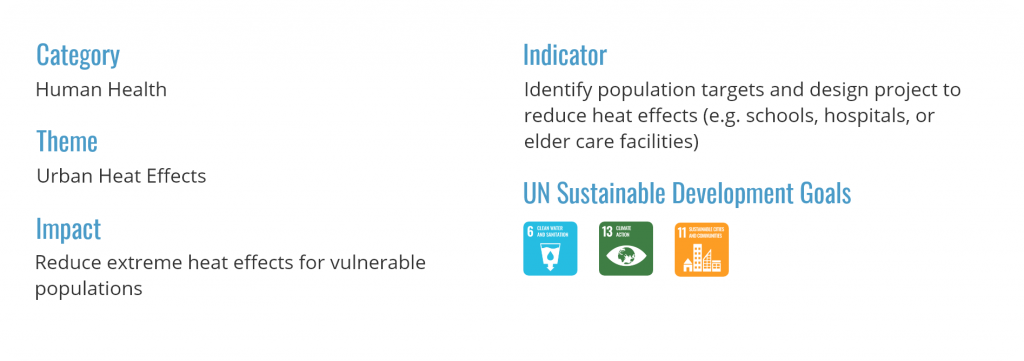Research confirms that nature in cities has profound and positive impacts on our lives. Analysis has shown that trees are not equitably distributed across communities however, which can translate to disparities in heat and pollution exposure for residents of low-income or formerly redlined neighborhoods.
All people should have access to trees and green spaces. Based on the latest science, Impact Certification provides the first project-scale design tool and demonstrates human health, social equity, and environmental benefits of trees.
How it Works
Equity is far more than simply planting trees. We provide the design tools for urban foresters, environmental justice organizations, and residents to build trust, place-based leadership, and space to listen to each other as they green our cities.
Funding to kickstart the conversation is the missing piece. That’s why we connect businesses with local nonprofit or government partners on the ground.
Local operators can design a project with community members that meets their needs. Businesses can fund a pre-designed project, contribute to the design process with a local operator, or provide funds for a project to be created in a location important to its stakeholders. After trees are planted, funders receive a standardized report to share the return on investment with stakeholders.
See a diagram of the process below.

A Closer Look
The design tool is called the Impact Scorecard and is divided into three categories. Each category is organized into 5 themes, with 15 impacts, and 30 indicators, for a total of 90 possible indicators. The indicators are the design elements that a local operator can include to achieve a target impact in a tree project, and are connected to supporting research and UN Sustainable Development Goals.
If you’re located in a city that experiences intense heat waves and high temperatures, you may choose to focus on design elements that cool the air or create thermal refuge in busy public spaces. Site selection can include locations such as schools, hospitals or elder care facilities where trees will benefit vulnerable populations.
Here is a snapshot of one design element.

Local operators receive a score for each category in a project, which is included in a high-level Impact Summary and detailed Impact Report.
See how it all comes together in a project led by Arizona Sustainability Alliance called Greening Thompson Ranch School in El Mirage, AZ.
Behind the Science
CFC consulted with many stakeholders and experts to develop Impact Certification, including Dr. Kathleen Wolf. Dr. Wolf is a research social scientist focused on human dimensions of nature in cities, including public health. She screened hundreds of research publications about city trees and human health, then translated this science to performance metrics that are achievable and show tangible change.
The evidence about nature and health is compelling. Trees and forests are not just nice to have; they are profoundly important in our communities. And we have to pay attention to equity. Everyone needs nature.
—Dr. Kathleen Wolf, Research Social ScientistUniversity of Washington



